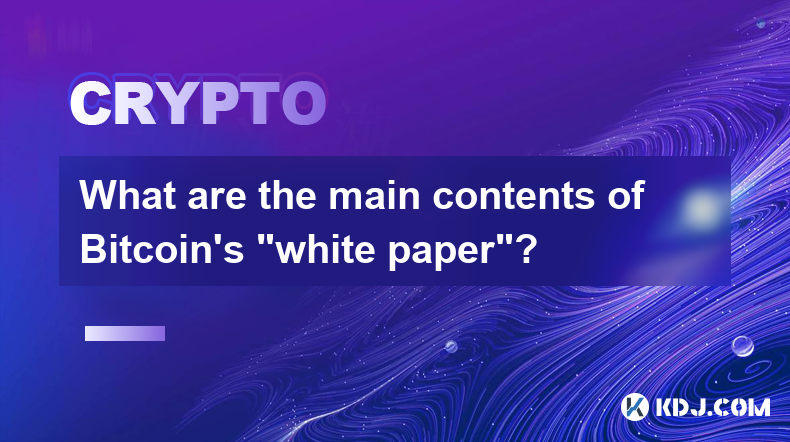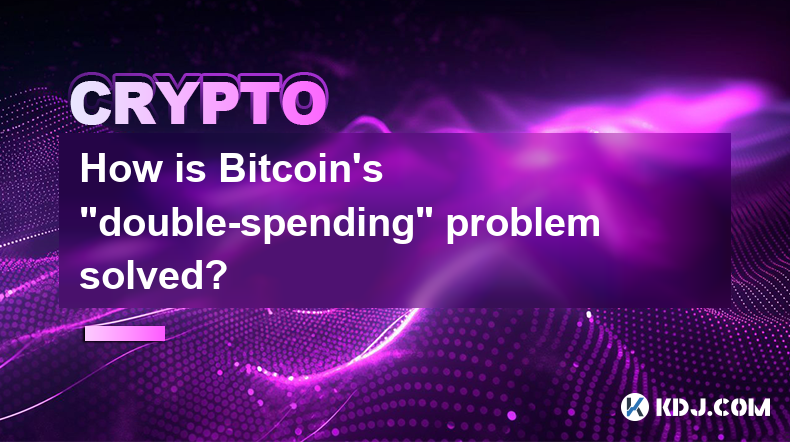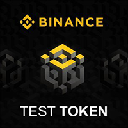-
 Bitcoin
Bitcoin $96,359.5529
0.20% -
 Ethereum
Ethereum $2,812.8874
4.58% -
 XRP
XRP $2.5892
0.71% -
 Tether USDt
Tether USDt $1.0002
0.03% -
 BNB
BNB $664.6300
1.32% -
 Solana
Solana $172.0998
0.08% -
 USDC
USDC $1.0002
0.02% -
 Dogecoin
Dogecoin $0.2466
1.37% -
 Cardano
Cardano $0.7828
2.86% -
 TRON
TRON $0.2422
1.86% -
 Chainlink
Chainlink $18.0261
3.32% -
 Avalanche
Avalanche $25.6599
2.87% -
 Sui
Sui $3.4049
2.24% -
 Stellar
Stellar $0.3353
2.65% -
 Litecoin
Litecoin $127.3333
0.12% -
 Toncoin
Toncoin $3.7792
3.29% -
 Shiba Inu
Shiba Inu $0.0...01572
2.89% -
 Hedera
Hedera $0.2153
0.64% -
 UNUS SED LEO
UNUS SED LEO $9.7397
0.13% -
 MANTRA
MANTRA $8.6824
13.45% -
 Hyperliquid
Hyperliquid $24.2831
0.06% -
 Polkadot
Polkadot $5.1038
0.36% -
 Bitcoin Cash
Bitcoin Cash $331.4356
4.51% -
 Bitget Token
Bitget Token $5.0698
1.38% -
 Ethena USDe
Ethena USDe $0.9998
0.10% -
 Uniswap
Uniswap $9.1583
4.12% -
 Dai
Dai $1.0001
0.01% -
 Monero
Monero $236.2980
1.35% -
 NEAR Protocol
NEAR Protocol $3.4734
0.18% -
 Pepe
Pepe $0.0...09665
3.94%
What is the issuance and circulation of Stacks (STX) coins?
The Stacks (STX) blockchain boasts a circulating supply of approximately 1,187,000,000 tokens, a figure that has increased gradually due to the mining and staking of new STX.
Dec 08, 2024 at 08:20 pm

Issuance and Circulation of Stacks (STX) Coins
Stacks (STX) is a layer-1 blockchain that aims to bring smart contracts and decentralized applications (dApps) to the Bitcoin network. The STX token is the native cryptocurrency of the Stacks blockchain and is used for paying transaction fees, staking, and governance.
Issuance
The total supply of STX is 1,818,204,036 tokens. The initial distribution of STX tokens was as follows:
- 40% to the Stacks Foundation
- 20% to Stacks venture funds
- 20% to Stacks team members and advisors
- 20% to the public through a token sale
The Stacks Foundation is responsible for the development and governance of the Stacks blockchain. The venture funds will be used to invest in projects that build on the Stacks blockchain. The team members and advisors will receive their tokens over a four-year period.
Circulation
The circulating supply of STX is approximately 1,187,000,000 tokens. The remaining tokens are held by the Stacks Foundation, venture funds, and team members and advisors.
The circulating supply of STX has been increasing gradually over time. This is because new STX tokens are being minted to reward miners and stakers. The issuance rate of STX is determined by the Stacks Foundation and is currently set at 2.5% per year.
Use Cases
STX tokens have a number of use cases, including:
- Transaction fees: STX tokens are used to pay transaction fees on the Stacks blockchain. The transaction fee is determined by the size and complexity of the transaction.
- Staking: STX tokens can be staked to earn rewards. Staking helps to secure the Stacks blockchain and process transactions.
- Governance: STX token holders can participate in the governance of the Stacks blockchain. They can vote on proposals to change the protocol and elect members of the Stacks Foundation.
Conclusion
The Stacks blockchain is a promising new platform for smart contracts and dApps. The STX token is the native cryptocurrency of the Stacks blockchain and has a number of use cases. The total supply of STX is 1,818,204,036 tokens, and the circulating supply is approximately 1,187,000,000 tokens.
Disclaimer:info@kdj.com
The information provided is not trading advice. kdj.com does not assume any responsibility for any investments made based on the information provided in this article. Cryptocurrencies are highly volatile and it is highly recommended that you invest with caution after thorough research!
If you believe that the content used on this website infringes your copyright, please contact us immediately (info@kdj.com) and we will delete it promptly.
- 'America Will Be the Crypto Capital,' Trump Says at Summit
- 2025-02-23 17:05:26
- Mutuum Finance (MUTM) Presale Surpasses $1 Million, Poised to Disrupt CoinMarketCap Rankings
- 2025-02-23 17:00:26
- Shiba Inu (SHIB) vs. DTX Exchange (DTX) – Which One Could Be the Next 1000% Breakout?
- 2025-02-23 17:00:26
- AltVest Capital Adds Bitcoin to Treasury Reserves, Reflecting Growing Acceptance of Cryptocurrency in Africa
- 2025-02-23 17:00:26
- Rollblock (RBLK) Doubles Down With Startling 50% Token Bonus
- 2025-02-23 17:00:26
- Can Ripple's XRP Reach New Heights? Key Factors and Forecasts You Need to Know
- 2025-02-23 17:00:26
Related knowledge

What are the long-term investment risks of Bitcoin?
Feb 22,2025 at 05:30pm
Key PointsVolatility and price fluctuationsRegulatory uncertaintySecurity risksCompetition from altcoinsMarket manipulation and scamsTransaction feesEnvironmental concernsLong-Term Investment Risks of BitcoinVolatility and Price FluctuationsBitcoin's high volatility is a double-edged sword. While it has the potential to generate substantial returns, it ...

What are the main contents of Bitcoin's "white paper"?
Feb 21,2025 at 04:36am
Key Points:Understanding Bitcoin's Genesis: The White Paper's IntroductionA Decentralized Digital Currency: Bitcoin's Core ConceptBlockchain Technology: The Foundation of Bitcoin's Immutable LedgerProof-of-Work: Securing Bitcoin's NetworkThe Design of Bitcoin's Currency: Issuance, Scarcity, and DivisibilityBitcoin's Potential Applications and Future Pro...

How does Bitcoin's distributed ledger ensure consistency?
Feb 22,2025 at 10:06pm
Key Points:Bitcoin employs a distributed ledger, also known as a blockchain, to maintain a tamper-proof and consistent record of transactions.The blockchain is a decentralized network of computers that collectively validate and store transaction data.Bitcoin's distributed ledger ensures consistency through consensus mechanisms and cryptographic algorith...

What does the Cryptographic Fundamentals of Bitcoin consist of?
Feb 21,2025 at 12:06pm
Key PointsUnderstanding the cryptographic algorithms used in BitcoinFamiliarization with the Bitcoin blockchain and its underlying mechanicsExamination of the security measures that protect Bitcoin from attackAnalysis of the decentralized nature of Bitcoin and its implicationsDiscussion of the scalability and transaction fee issues associated with Bitco...

What is Bitcoin's relationship with blockchain technology?
Feb 22,2025 at 07:00pm
Bitcoin's Intertwined Relationship with Blockchain TechnologyKey Points:Definition of blockchain technology and its decentralized natureBitcoin's utilization of blockchain for secure and immutable transactionsThe role of blockchain in verifying and confirming transactionsEvolution of blockchain technology beyond Bitcoin's cryptocurrency applicationsUnde...

How is Bitcoin's "double-spending" problem solved?
Feb 23,2025 at 02:54am
Key Points:The double-spending problem refers to the potential for a digital currency transaction to be reversed, allowing the same funds to be spent multiple times.Bitcoin solves this problem through the use of a decentralized blockchain, a public ledger that records all transactions permanently and securely.The immutability and transparency of the blo...

What are the long-term investment risks of Bitcoin?
Feb 22,2025 at 05:30pm
Key PointsVolatility and price fluctuationsRegulatory uncertaintySecurity risksCompetition from altcoinsMarket manipulation and scamsTransaction feesEnvironmental concernsLong-Term Investment Risks of BitcoinVolatility and Price FluctuationsBitcoin's high volatility is a double-edged sword. While it has the potential to generate substantial returns, it ...

What are the main contents of Bitcoin's "white paper"?
Feb 21,2025 at 04:36am
Key Points:Understanding Bitcoin's Genesis: The White Paper's IntroductionA Decentralized Digital Currency: Bitcoin's Core ConceptBlockchain Technology: The Foundation of Bitcoin's Immutable LedgerProof-of-Work: Securing Bitcoin's NetworkThe Design of Bitcoin's Currency: Issuance, Scarcity, and DivisibilityBitcoin's Potential Applications and Future Pro...

How does Bitcoin's distributed ledger ensure consistency?
Feb 22,2025 at 10:06pm
Key Points:Bitcoin employs a distributed ledger, also known as a blockchain, to maintain a tamper-proof and consistent record of transactions.The blockchain is a decentralized network of computers that collectively validate and store transaction data.Bitcoin's distributed ledger ensures consistency through consensus mechanisms and cryptographic algorith...

What does the Cryptographic Fundamentals of Bitcoin consist of?
Feb 21,2025 at 12:06pm
Key PointsUnderstanding the cryptographic algorithms used in BitcoinFamiliarization with the Bitcoin blockchain and its underlying mechanicsExamination of the security measures that protect Bitcoin from attackAnalysis of the decentralized nature of Bitcoin and its implicationsDiscussion of the scalability and transaction fee issues associated with Bitco...

What is Bitcoin's relationship with blockchain technology?
Feb 22,2025 at 07:00pm
Bitcoin's Intertwined Relationship with Blockchain TechnologyKey Points:Definition of blockchain technology and its decentralized natureBitcoin's utilization of blockchain for secure and immutable transactionsThe role of blockchain in verifying and confirming transactionsEvolution of blockchain technology beyond Bitcoin's cryptocurrency applicationsUnde...

How is Bitcoin's "double-spending" problem solved?
Feb 23,2025 at 02:54am
Key Points:The double-spending problem refers to the potential for a digital currency transaction to be reversed, allowing the same funds to be spent multiple times.Bitcoin solves this problem through the use of a decentralized blockchain, a public ledger that records all transactions permanently and securely.The immutability and transparency of the blo...
See all articles




















































































